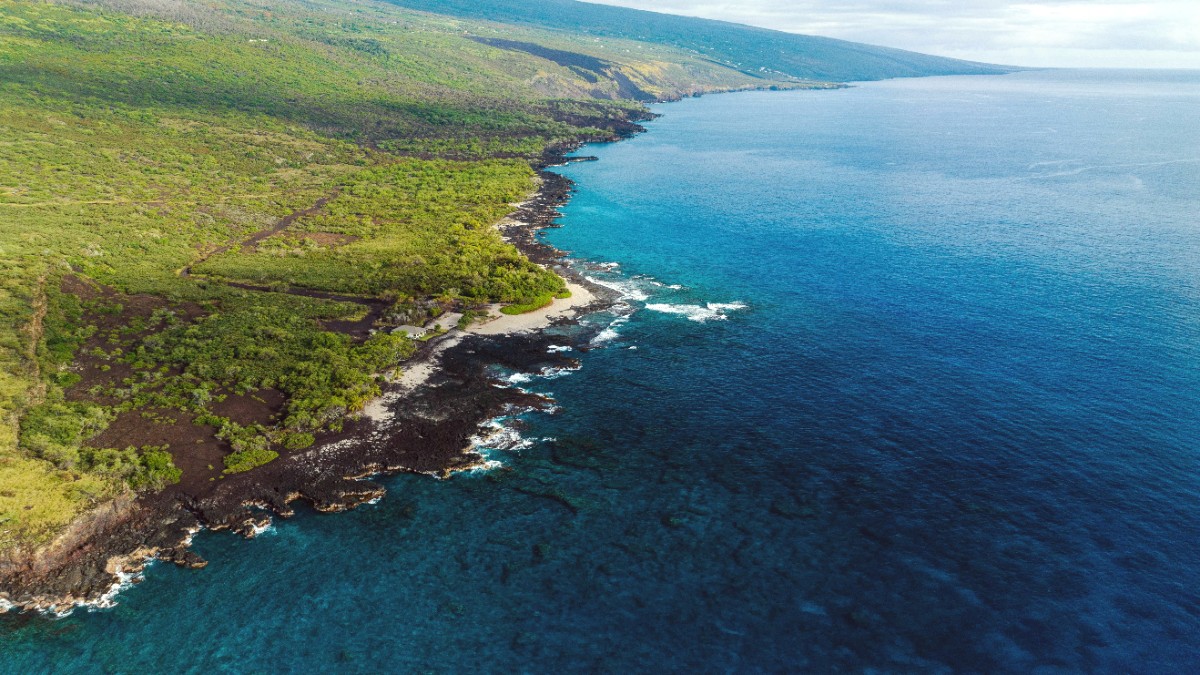
Hawaii, USA
Polynesian voyagers first introduced staples like taro and breadfruit. Later, immigration from China, Japan, the Philippines, Portugal, Korea, and Puerto Rico brought diverse culinary traditions, creating the distinctive "local food."
The Big Island features a strong "farm-to-fork" and "ocean-to-table" movement, with many restaurants sourcing ingredients directly from local farms and fishers, reflecting "Aloha Aina," love of the land.
Famous for Kona coffee, fresh seafood, and high-end resort dining. More international cuisine options cater to diverse visitors.
Features traditional "local plate lunches" and a greater concentration of authentic Filipino, Japanese, and traditional Hawaiian eateries. Prominent farmers' markets.
Waimea, "Paniolo" country, focuses on local beef and farm-grown produce. Puna, a rural area, features smaller, local eateries and abundant fresh fruit stands.
Cubed raw fish (often ahi), seasoned with soy sauce, sesame oil, and seaweed. Fresh and flavorful.
Find at supermarket delis (KTA, Foodland), dedicated poké shops, local fish markets.
Pork slow-cooked in an imu (underground oven) until tender and smoky, then shredded.
A centerpiece at luau events, available at some Hawaiian and plate lunch restaurants.
White rice topped with a hamburger patty, fried egg, and brown gravy. A comfort food classic.
Found at local diners, casual eateries, and breakfast spots island-wide.
World-renowned coffee from the Kona district, served everywhere. Taste directly from local farms.
Finely shaved ice with flavored syrups, often with ice cream or condensed milk. A refreshing treat.
Found at Kohala Coast Resorts (Merriman's Waimea, Brown's Beach House at Fairmont Orchid, The CanoeHouse at Mauna Lani). Also in Kona (Huggo's, Jackie Rey's Ohana Grill).
Kona: Kona Brewing Co., Fish Hopper, Island Lava Java. Hilo: Cafe Pesto, Pineapple's Island Fresh Cuisine, Ken's House of Pancakes. Waimea: Merriman's Market Cafe, Big Island Brewhaus.
Reflecting the island's multicultural heritage, you will find Japanese, Chinese, Thai, and Mexican restaurants, mainly in Hilo and Kona.
Increasingly available, specifically in Kona and Hilo. Many restaurants offer or can adapt dishes. Farmers' markets are a good resource for fresh produce.
Use apps like HappyCow for options.
Some restaurants accommodate gluten-free and other allergen requests. Always inform staff clearly about allergies. Larger resorts are generally prepared.
Grocery stores (KTA, Foodland, Safeway) carry specialty products.
Offered at resorts or by private chefs, focusing on Hawaiian cuisine.
Explore local eateries, coffee farms, and farmers' markets in Kona and Hilo.
Kona Coffee Farms (Greenwell Farms), Mauna Loa Macadamia Nut Visitor Center.
Traditional Hawaiian feasts with entertainment. "Farm-to-Fork" dinners.
Enjoy fresh papayas, mangoes (in season), lychees, rambutan, and soursop from local fruit stands or farmers' markets.
Visit local stands for peak freshness.
A traditional Hawaiian coconut pudding, usually firm and gelatinous, with a subtle sweetness.
A common dessert at luau and local eateries.
These options are very limited on the Big Island. No dedicated Halal or Kosher restaurants exist. Travelers with strict dietary requirements may need to self-cater or use pre-packaged goods.
For specific dietary needs, communicate directly with restaurants beforehand, especially for fine dining, to confirm their ability to accommodate your requests.
Many farms in the Kona district offer tours and tastings, covering the coffee-making process from bean to cup.
Visit the Mauna Loa Macadamia Nut Visitor Center to learn about production and sample products.
The Hawaiian Vanilla Company offers tours. Look for tours at specific cacao farms for chocolate production.
Special events at farms or restaurants demonstrating fresh local ingredients in multi-course meals.
Direct interaction with farmers or chefs.
Hilo Farmers Market, Kona Farmers Market, Keauhou Farmers Market, Waimea Midweek Farmers Market.
Great for fresh produce, prepared foods, and local crafts.
Island Breeze Luau at Courtyard King Kamehameha's Kona Beach Hotel, Mauna Kea Lūʻau for cultural evenings.
Food tours in Kona and Hilo immerse you in the island's diverse culinary offerings.
The island's diverse climate supports a wide range of agriculture, meaning fresh, local ingredients are a cornerstone of the cuisine.